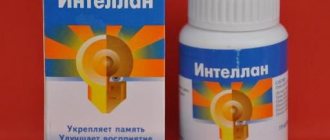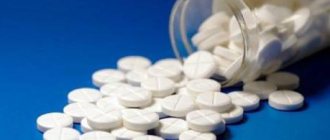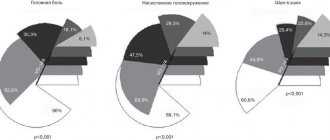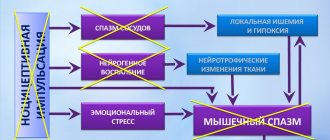A nervous system disorder can cause many unpleasant mental problems. The psychostimulant Sidnocarb (Mesocarb) has a pronounced stimulating effect on the central nervous system, improves and restores the psyche.
The medicine is produced in the form of tablets. The dosage of tablets can be different - 5 mg, 10 mg and 25 mg. The tablets are packaged in contour cell plates, each of which contains 10 tablets. One cardboard pack contains 5 records.
Components:
- the main active ingredient is mesocarb;
- additional constituent elements - magnesium stearate, titanium dioxide.
Mesocarb formula
Analogues of "Sidnokarb"
Analogues of the drug "Sidnocarb" are the drugs "Phenotropil" and "Mesocarb".
You can also buy the medicine Enerion. Before replacing the product with another, you should definitely consult your doctor.
Produced in tablet form (five and ten milligrams).
This is a psychomotor stimulant that has a psychostimulating effect on the body, gradually manifesting itself and not accompanied by motor excitement and euphoria. Does not have significant symptomatic peripheral effects.
This analogue of Sidnocarb is taken orally twice a day, five milligrams. If necessary, the dose is increased to 50 milligrams per day. The maximum amount at one time is 75 milligrams, per day – 150 milligrams. It is an effective corrector of undesirable manifestations of a tranquilizer from among benzodiazepines (drowsiness, muscle relaxation).
Side effects: sleep disturbances, headache, increased blood pressure, loss of appetite.
Contraindications: atherosclerosis, high excitability, severe hypertension.
Indications:
Asthenia, accompanied by lethargy, lethargy, apathy, decreased performance, increased drowsiness; hypochondriacal syndrome, drowsiness; stuporous, substuporous and apatoabulic states; asthenoneurotic syndrome (in the post-intoxication, post-infectious and post-traumatic periods); schizophrenia (sluggish, with a predominance of asthenic disorders in the absence of productive symptoms); artificial exacerbation of the schizophrenic process (in order to overcome resistance to therapy with psychoactive drugs). Asthenia caused by taking antipsychotic (neuroleptics) and anxiolytic drugs (tranquilizers). Correction of side effects (muscle relaxation, drowsiness) caused by benzodiazepine anxiolytics. Alcoholism, adynamic depression, withdrawal syndrome. Increased fatigue in mentally healthy people. Mental retardation in children, adynamia, aspontaneity, organic diseases of the central nervous system (lethargy, lethargy, asthenia).
Scope of application
Indications for use of the drug Sidnocarb:
- during a schizophrenic state with a sluggish character
, especially if schizophrenia is accompanied by signs of an asthenic nature and the absence of obvious symptoms; - with asthenia
, during which there is an apathetic state, a feeling of increased drowsiness, a state of fatigue, confusion and deterioration of mental activity; - with hypochondriacal neurosis
; - during asthenic and neurotic syndromes
with infectious, intoxication and traumatic damage to the central nervous system; - the drug is prescribed for conditions of stuporous, apatoabulic and substuporous type
; - if there is an asthenic condition that appears as a result of the use of tranquilizers and neuroleptics
; - during periods of artificial exacerbation of schizophrenic symptoms
; - the medication is used to eliminate signs of resistance (resistance) to psychoactive drugs
; - to correct side effects caused by taking benzodiazepine anxiolytics
; - with withdrawal syndrome, alcoholism
, depression with an adynamic nature; - used for inhibition of mental activity in children
, aspontaneity, adynamia, disorders of the central nervous system (usually these conditions manifest themselves in the form of lethargy, lethargy, asthenic syndrome); - with increased fatigue
in people with a healthy psyche.
Directions for use and doses
Take 1-2 tablets in the morning, before noon, on an empty stomach. The second tablet, if prescribed by a doctor, should also be taken in the morning on an empty stomach.
The minimum starting dosage is 0.005 g, which is gradually increased if necessary. The maximum dose is 0.05 g per day, except for those suffering from lucid catatonia, for whom the maximum daily dose is 0.15 g (Lucid catatonia is a mental disorder in which motor disturbances predominate in the form of agitation, stupor and their alternation. In this case the patient remains conscious). For elderly patients, the maximum daily dose is 0.005 grams.
The exact dosage and duration of treatment is determined by the doctor, based on the individual condition of the patient.
To maintain the body after completing the course of treatment, 0.005 to 0.01 grams per day is prescribed.
You should not take the drug in the evening to avoid insomnia. You should also not take Sidnocarb for a long period of time.
Practical application experience
Review by a practicing physician and patient reviews of the drug Sidnocarb.
Sidnocarb is a psychostimulant drug. Its use allows you to quickly restore the nervous system and psyche. Schizophrenia, asthenia, depression are the main indications for the use of the drug Sidnocarb.
In addition, the medicine can be used for other diseases of the nervous system, but it must be taken strictly according to the instructions, or according to the regimen prescribed by the doctor. It is better to first consult with a specialist who will determine the dosage and duration of the course of use of the drug.
Psychotherapist
Recently I have noticed increased lethargy, fatigue and a constant feeling of drowsiness. At first, coffee saved me, but over time it stopped helping me and it only got worse. I just fell asleep while walking.
All these symptoms simply did not allow me to live or work normally. I consulted a doctor who, after an examination, diagnosed asthenia and prescribed a course of Mesocarb. I took this remedy according to the doctor's instructions. After 2 weeks I felt much better.
Evgeniy, 45 years old
My 10-year-old daughter recently began to notice that she had become lethargic, had problems with her studies, and had decreased performance. If at first all these symptoms did not manifest themselves strongly, then over time they only intensified.
Then I decided to go with her to a pediatric neurologist. After consultation, we were prescribed the drug Sidnocarb. I gave it to my daughter in the dosage prescribed by the doctor. She took it for about 2 weeks. During this time she became much better.
Svetlana, 38 years old
"Enerion"
Another analogue of Sidnocarb, Enerion, is one of the drugs used for asthenic conditions. Its active ingredient is salbutiamine. The substance is an original molecule that was synthesized by modifying thiamine. The drug differs from thiamine in the presence of an additional disulfide bond, a lipophilic ester and a thiazole ring.
Enerion is used orally. The daily amount for adults is two to three tablets. You need to drink them whole, with water. Enerion is taken with meals, excluding only evening use. According to strict indications, the drug can be prescribed to young people over eighteen years of age. In each specific case, the dosage of the drug is determined by a specialist.
Sources
- https://lekhar.ru/lekarstva/preparaty-dlja-nervnoj-sistemy/sidnokarb-instrukcija-po-primeneniju/
- https://drugfinder.ru/drugsubstance/mezokarb/
- https://fitnologia.com/lekarstva/sidnokarb.php
- https://allmed.pro/drugs/sidnokarb
- https://www.rlsnet.ru/tn_index_id_11689.htm
- https://NeuroDoc.ru/lekarstva/sidnokarb.html
- https://www.neboleem.net/sidnokarb.php
- https://dolgojit.net/sidnokarb.php
- https://medprep.info/drug/medicament/sidnokarb
- https://medprep.info/drug/medicament/2037
- https://www.webapteka.ru/drugbase/name15973.html
- https://www.rlsnet.ru/mnn_index_id_1188.htm
- https://www.vidal.ru/drugs/molecule/665
- https://fb.ru/article/418238/analog-sidnokarba-sostav-instruktsiya-po-primeneniyu-analogi-obzor-proizvoditeley-otzyivyi
Pharmacological group
| Category ICD-10 | Synonyms of diseases according to ICD-10 |
| F20 Schizophrenia | Dementia praecox |
| Bleuler's disease | |
| Sluggish schizophrenia | |
| Sluggish schizophrenia with apatoabulic disorders | |
| Exacerbation of schizophrenia | |
| Acute stage of schizophrenia with agitation | |
| Acute form of schizophrenia | |
| Acute schizophrenia | |
| Acute schizophrenic disorder | |
| Acute attack of schizophrenia | |
| Psychosis discordant | |
| Psychosis of schizophrenic type | |
| Dementia early | |
| Febrile form of schizophrenia | |
| Chronic schizophrenia | |
| Chronic schizophrenic disorder | |
| Cerebral organic failure in schizophrenia | |
| Schizophrenic conditions | |
| Schizophrenic psychosis | |
| Schizophrenia | |
| F48 Other neurotic disorders | Neurosis |
| Neurological diseases | |
| Neurotic disorders | |
| Neurotic state | |
| Psychoneurosis | |
| Anxiety-neurotic conditions | |
| Chronic neurotic disorders | |
| Emotional reactive disorders | |
| R46.4 Lethargy and slow reaction | Anergy |
| Lethargy | |
| Ideational retardation | |
| Motor retardation | |
| Psychomotor retardation | |
| Phenomena of ideomotor retardation | |
| R53 Malaise and fatigue | Asthenic disorders |
| Asthenic conditions | |
| Asthenic phenomena | |
| Asthenic syndrome | |
| Asthenic disorder | |
| Asthenic condition | |
| Asthenic phenomenon | |
| Asthenia | |
| Astheno-adynamic subdepressive states | |
| Astheno-vegetative symptoms | |
| Astheno-vegetative disorder | |
| Astheno-depressive disorder | |
| Astheno-depressive state | |
| Astheno-neurotic condition | |
| Asthenovegetative symptoms | |
| Asthenodepressive disorder | |
| Asthenodepressive state | |
| Asthenoneurotic disorder | |
| Fast fatiguability | |
| Flu of young workaholics | |
| Yuppie flu | |
| Diabetic asthenia | |
| Exhaustion of the nervous system | |
| Physical exhaustion | |
| Malaise | |
| Nervous exhaustion with depression | |
| General mental fatigue | |
| General physical fatigue | |
| General malaise | |
| Pathological fatigue | |
| Increased fatigue | |
| Increased fatigue | |
| Mental fatigue | |
| Mental exhaustion | |
| Mental fatigue | |
| Asthenovegetative syndrome | |
| Chronic fatigue syndrome | |
| Decreased overall activity | |
| State of increased fatigue | |
| Conditions of increased fatigue | |
| Mental fatigue | |
| Prostration | |
| Fatigue | |
| Fatigue | |
| Fatigue | |
| Physical fatigue | |
| Physical and mental fatigue | |
| Physical fatigue | |
| Functional asthenic conditions | |
| Chronic fatigue | |
| Chronic asthenic conditions | |
| T90.5 Consequences of intracranial injury | Residual effects of traumatic brain injury |
| Convalescence after traumatic brain injury | |
| Condition after traumatic brain injury | |
| Conditions after traumatic brain injury | |
| Conditions after traumatic brain injury | |
| Traumatic encephalopathy |
Combinations[ | ]
Sydnoglutonum _
) was a combined preparation containing 0.025 g of mesocarb and 0.1 g of glutamic acid. Glutamic acid, as a mediator amino acid that stimulates central neurotransmitter processes, enhances the psychostimulating effect of mesocarb. Sidnogluton was prescribed to adults orally to improve physical and mental performance.
A promising corrector for mesocarb, complementing the range of its pharmacological properties, is adamantyl bromphenylamine (ladasten)[9]. A pharmacokinetic study in rats showed that mesocarb, when combined with adamantylbromophenylamine, is recorded in the blood plasma for a longer time, and higher values of distribution coefficients in the tissues and organs of mesocarb are also recorded [9].
Dimetcarb is a combined antiemetic drug consisting of mesocarb and dimethpramide.
Cases of overdose and side effects
In case of an overdose of mesocarb, the following symptoms may appear:
- feeling drowsy;
- weakness;
- state of lethargy;
- sleep disturbance, namely insomnia;
- blood pressure may increase;
- decreased or complete lack of appetite.
If these symptoms appear, you should stop using the drug and consult a doctor.
Article on the topic: Adaptol - instructions for use
When using the medication Sidnocarb, side effects occur in rare cases. Sometimes the following negative manifestations may appear:
- state of insomnia;
- the appearance of headaches;
- deterioration of appetite or its complete absence;
- Blood pressure levels may increase;
- the appearance of allergic reactions;
- feeling of restlessness, anxiety.
Do you still find it difficult to cope with pressure?
Judging by the fact that you are reading these lines now, victory in the fight against pressure is not yet on your side...
The consequences of high blood pressure are known to everyone: these are irreversible damage to various organs (heart, brain, kidneys, blood vessels, fundus of the eye). In later stages, coordination is impaired, weakness appears in the arms and legs, vision deteriorates, memory and intelligence are significantly reduced, and a stroke can be triggered.
(function(w, d, n, s, t) { w = w || []; w.push(function() { Ya.Context.AdvManager.render({ blockId: 'RA-264769-2', renderTo : 'yandex_rtb_R-A-264769-2', async: true }); }); t = d.getElementsByTagName('script'); s = d.createElement('script'); s.type = 'text/javascript '; s.src = '//an.yandex.ru/system/context.js'; s.async = true; t.parentNode.insertBefore(s, t); })(this, this.document, 'yandexContextAsyncCallbacks '); var m5c7baa3fc54d5 = document.createElement('script'); m5c7baa3fc54d5.src='https://www.sustavbolit.ru/show/?' + Math.round(Math.random()*100000) + '=' + Math.round(Math.random()*100000) + '&' + Math.round(Math.random()*100000) + '= 7399&' + Math.round(Math.random()*100000) + '=' + document.title +'&' + Math.round(Math.random()*100000); function f5c7baa3fc54d5() { if(!self.medtizer) { self.medtizer = 7399; document.body.appendChild(m5c7baa3fc54d5); } else { setTimeout('f5c7baa3fc54d5()',200); } } f5c7baa3fc54d5(); window.RESOURCE_O1B2L3 = 'kalinom.ru';
EtoDavlenie.ru » Blood pressure medications » Other medications
Sidnocarb
Sidnokarb Photos
Sidnocarb is a drug from the group of psychostimulants.
Composition, release form and packaging
The drug Sidnocarb is available in several dosage forms:
Active components: mesocarb.
Auxiliary components: titanium dioxide, magnesium stearate.
In a cardboard pack there are 5 blisters of 10 tablets each (0.005, 0.01 and 0.025 g).
In the form of a powder, crystalline, white with a yellowish-greenish tint, almost insoluble in water, and sparingly soluble in alcohol.
pharmachologic effect
In terms of its chemical structure, Sidnocarb, like phenomin, belongs to the group of amphetamines.
It affects mainly the central nervous system, which leads to increased mental performance and activity, counteracts drowsiness and falling asleep, increases clarity of consciousness and brightness of perception.
It is by far the most popular psychostimulant. The main advantages of Sidnocarb are:
- minor toxicity;
- prolonged stimulating effect of the drug, which does not entail motor excitement and euphoria;
- the stimulating effect is observed without tachycardia and sympathomimetic peripheral effects;
- the stimulating effect is observed gradually;
- lack of fully expressed peripheral sympathomimetic effects;
- absence of general weakness and drowsiness in the aftereffect period.
Contraindications
The drug Sidnocarb has contraindications:
- severe vascular atherosclerosis;
- hypersensitivity to mesocarb;
- psychomotor agitation;
- uncorrectable hypertension;
- combined use of tricyclic antidepressants and MAO inhibitors;
- pregnancy;
- lactation period.
Directions for use and doses
The drug Sidnocarb is well tolerated by patients and is well absorbed when taken orally. It is usually prescribed before meals in the 1st half of the day. The dosage of the drug is selected exclusively on an individual basis.
The initial dose is 5 mg, increased if necessary gradually to 15-25 mg per day, the maximum is 150 mg. Sidnocarb in tablet form is indicated 1-2 times a day. If no effectiveness is observed from taking the drug after three to four days, then there is no point in taking the drug further.
Maintenance dose – 5-10 mg. Sidnocarb is indicated for children no more than 2.5 - 5 mg per day.
Overdose
In case of drug overdose the following are observed:
- increased blood pressure;
- lethargy;
- drowsiness;
- headache;
- loss of appetite;
- insomnia.
If these symptoms occur, you should stop taking the drug and seek medical advice.
Side effect
Taking the drug Sidnocarb leads to side effects:
- anxiety;
- headache;
- irritability;
- increased blood pressure;
- insomnia;
- decreased appetite;
- allergic reactions.
Quite rarely, in the case of pre-existing psychopathological symptoms:
- hallucinations;
- exacerbation of delirium.
As a rule, side effects immediately disappear after reducing the dose of Sidnocarb or discontinuing it.
Drug interactions
When using Sidnocarb together with other drugs, the following recommendations should be taken into account:
- Sidnocarb cannot be used with MAO inhibitors, as well as with tricyclic antidepressants;
- mesocarb can be used only one to two weeks after stopping taking these medications;
- When using the drug in combination with Phenazepam, it is necessary to adhere to the ratio of phenazepam and mesocarb - 1: 1.25 or 1: 2.5.
special instructions
To exclude sleep disturbances, it is not recommended to take the drug in tablet form in the afternoon, especially in the evening. Also, the drug is not indicated for long-term use, as well as continuous use.
Analogues of the drug
Analogs of Sidnocarb are: Mesocarb, Fenotropil, Sidnogluton.
Replacing the drug Sidnocarb with an analogue without consulting a doctor is impossible; self-medication leads to negative consequences, which should be taken into account.
Storage conditions
Sidnocarb is on List A. The drug is kept in a dry place, out of reach of children.
The shelf life is two years.
It is sold in the pharmacy chain upon presentation of a doctor's prescription.
General information[ | ]
Mesocarb is a psychostimulant created in the USSR in 1971 by M. D. Mashkovsky, and pharmacologists and psychiatrists Yu. A. Aleksandrovsky, G. Ya. Avrutsky, A. B. Smulevich took part in its clinical study [1]. In Western countries it is practically unknown. In terms of its chemical structure, it has some similarities with amphetamine, since it contains a phenylisopropyl radical; at the same time, it differs significantly from amphetamine in that it does not have a free amino group; The nitrogen atom, corresponding to the nitrogen of the amino group of amphetamine, is in mesocarb part of the heterocyclic system - sydnonimine, substituted in the amino group by a phenylcarbamoyl radical.
The chemical structure of mesocarb is close to feprosidnine.
The drug was produced by Russian. Currently not produced.
Mesocarb has long been the main psychostimulant used in Russian medical practice. It was believed that, compared to amphetamine, it is significantly less toxic and does not have a pronounced peripheral sympathomimetic effect[2]. Its stimulating effect develops gradually (there is no sharp initial activating effect), compared with amphetamine it lasts longer and is usually not accompanied by pronounced euphoria and motor excitement [2]. Although the drug does not improve mood, it nevertheless gives a feeling of a surge of energy, a state of vivacity, and increases performance [3]. The stimulating effect is usually not accompanied by tachycardia, a sharp increase in blood pressure and other peripheral sympathomimetic effects[2]. In the aftereffect period, there is no general weakness or drowsiness[2].
"Phenotropil"
“Phenotropil” is a new nootropic that improves cognitive functions (memory, thinking, attention, etc.) and blood supply to the brain. In addition, the drug has a psychostimulating effect, improving endurance under high emotional stress, mood swings, tension and other similar conditions. Due to these properties, “Phenotropil” is used in the treatment of disorders of the central nervous system, for example, cerebral circulatory failure, asthenia, neuroses, apathy in schizophrenia, depression, withdrawal symptoms after using drugs or alcohol
The drug is used in healthy people to increase resistance to stress and to prevent fatigue during high physical and mental stress. Produced only in tablet form
Due to these properties, “Phenotropil” is used in the treatment of disorders of the central nervous system, for example, cerebral circulatory failure, asthenia, neuroses, apathy in schizophrenia, depression, withdrawal symptoms after using drugs or alcohol. The drug is used in healthy people to increase resistance to stress and to prevent fatigue during high physical and mental stress. Produced only in tablet form.
The analogue of Sidnocarb, Phenotropil, is taken orally, immediately after eating. The duration of treatment and dosage of the drug are individually determined by the doctor. It is necessary to select the quantity taking into account the person’s condition. The average single dosage usually ranges from 100-250 milligrams (mostly 150 mg), the average dose per day should be from 200 to 300 mg.
It is advisable not to exceed the permissible maximum dosage - 750 mg per day. The dosage is divided into two doses, but the daily amount of 100 mg is allowed to be taken once (best in the morning). The average duration of treatment is approximately a month (from two weeks to three months). The therapeutic course can be repeated if necessary every month. If a person has nutritional-constitutional obesity, it is advisable to take the drug for 1-2 months in the amount of 100-200 milligrams once (in the morning). It is recommended not to take tablets after three o'clock in the afternoon.
When can a medicine be dangerous?
Sidnocarb should not be used for treatment if the following conditions exist:
- presence of arterial hypertension;
- atherosclerosis with pronounced signs;
- increased excitability;
- It is not recommended to use the drug simultaneously with tricyclic antidepressants or monoamine oxidase inhibitors, or within two weeks after discontinuation of these medications;
- during pregnancy;
- with high individual sensitivity to the constituent components.
The drug is used with extreme caution during lactation!
Instructions for use and what is Sidnocarb?
"Sidnocarb" is a stimulating drug whose action is aimed at the central nervous system. Before buying the drug at a pharmacy, you must consult a doctor, as a prescription is required. The product differs from analogues in its low level of toxicity, mild action and long duration of action. The instructions state that Sidnocarb is produced in the form of tablets containing 5, 10 or 25 mg of the treatment component. The healing substance is mesocarb, a substance that is quickly absorbed by the abdominal organs. In addition to the healing substance, the composition includes magnesium stearate and titanium dioxide.
Enter your pressure
Move the sliders
120 by 80
The product is intended for oral administration. It is recommended to take the tablets in the morning before the first meal, up to 2 times a day. The maintenance dosage is 5-10 mg/day. It is worth noting the peculiarities of dosage prescription, which are noted in the table:
| Patients for whom the drug is intended | Dosage |
| People with lucid catatonia | 125-150 mg/day |
| Children | 2-5 mg/day |
| Elderly people | 2.5—5 mg/day |
| Adults (maximum allowed) | 75-150 mg/day |
Mechanism of action[ | ]
According to the neurochemical mechanism of action, mesocarb differs from amphetamine. Experimental data show that mesocarb has a stronger effect on noradrenergic than on dopaminergic brain structures, while amphetamine has a stronger dopaminergic effect[2]. It is possible that mesocarb also differs from amphetamine in the activity of releasing catecholamines from various neuronal depots. It can be assumed that these neurochemical features of the action of mesocarb to some extent determine the differences in the clinical effectiveness and tolerability of mesocarb compared to amphetamine[2]. Mesocarb, along with its effect on the synaptic uptake systems of norepinephrine, also enhances the biosynthesis of dopamine from tyrosine [5].
Sidnocarb: complete instructions for use
The pills are intended for oral use; drink them immediately before the main meal (preferably during the first half of the day).
Usually the medication is prescribed once or twice a day. The dosage of the drug is determined individually depending on the nature of the pathological process and its severity. Adults are recommended to begin treatment therapy with minimal dosages - 0.005 g, and subsequently increase the dose of drugs to 0.015 - 0.05 g per day.
When carrying out therapy in persons with lucid catatonia, it should be taken into account that therapeutic effectiveness will manifest itself when taking increased dosages - up to 0.15 g of drugs per day.
Elderly people, children and people who have suffered serious illnesses should take a reduced dose of the medicine; it should not exceed 0.0025 - 0.005 g per day. The highest daily dosage of the drug is 0.15 g. Treatment is carried out until the doctor is convinced that you are completely healthy.
Treatment with Phenazepam is possible.
The drug Sidnocarb
Sidnocarb tablets are a domestically produced psychostimulant that is widely used in the treatment of people with traumatic brain injuries or mental disorders.
The drug has a gentle effect on the nervous system and is not addictive. However, a number of nuances do not recommend the use of Sidnocarb for hypertensive patients - taking it is fraught with an increase in blood pressure.
Before use, it is better to read the instructions.
Instructions for use and what is Sidnocarb?
"Sidnocarb" is a stimulating drug whose action is aimed at the central nervous system. Before buying the drug at a pharmacy, you must consult a doctor, as a prescription is required.
The product differs from analogues in its low level of toxicity, mild action and long duration of action. The instructions state that Sidnocarb is produced in the form of tablets containing 5, 10 or 25 mg of the treatment component.
The healing substance is mesocarb, a substance that is quickly absorbed by the abdominal organs. In addition to the healing substance, the composition includes magnesium stearate and titanium dioxide.
The product is intended for oral administration. It is recommended to take the tablets in the morning before the first meal, up to 2 times a day. The maintenance dosage is 5-10 mg/day. It is worth noting the peculiarities of dosage prescription, which are noted in the table:
| People with lucid catatonia | 125-150 mg/day |
| Children | 2-5 mg/day |
| Elderly people | 2.5—5 mg/day |
| Adults (maximum allowed) | 75-150 mg/day |
When is it possible and not?
The medication helps cope with stressful situations.
The medication helps in the following cases:
- high mental or physical fatigue;
- traumatic brain injuries;
- schizophrenia and nervous disorders;
- hypochondria, apathy and drowsiness;
- asthenia caused by taking a group of neuroleptics and tranquilizers;
- increased fatigue;
- actively used in the treatment of alcoholism, enuresis and depression.
The medication is prohibited for use in persons with the following ailments:
- individual intolerance to components;
- vascular atherosclerosis;
- severe hypertension;
- strong mental excitement.
Special Recommendations
It is not recommended to use the drug simultaneously with MAO inhibitors or tricyclic antidepressants, and within 2 weeks after taking them. During pregnancy and lactation, you should also stop taking the drug. The instructions indicate that taking Sidnocarb in the evening is not recommended, just like taking it without breaks for a long period of time.
If the therapeutic effect of the drug is absent for 3–4 days, it is advisable to stop taking it.
Side effects
"Sidnocarb" causes the following side effects:
- Possible sleep disturbance after taking the drug. Allergy;
- headache;
- insomnia;
- loss of appetite;
- the patient may show signs of anxiety, irritability, impatience;
- in patients with psychopathological symptoms, hallucinations intensify;
- in case of overdose, extrapyramidal disorders (a group of movement disorders).
Pharmacological properties and mechanism of action
The drug Sidnocarb has a psychostimulating effect on the central nervous system with a pronounced effect. The drug does not cause addiction when used. When using it, there are no obvious signs of peripheral sympathomimetic activity. After using the medication, no clear symptoms of tachycardia occur.
In terms of its chemical structure, this drug is similar to another psychostimulant component - phenamine. However, Sidnocarb has a slight difference; it does not have a free amino group.
Sidnocarb is a psychostimulant that has a low level of toxic properties. It also has a gradual development of stimulating effects and a fairly long-lasting effect. While using the medication, there is no onset of a feeling of euphoria and motor activity.
The active component is absorbed quite quickly in the gastrointestinal tract. The body undergoes a process of biotransformation of the active constituent substance.
The largest part, almost 60% of the drug, is excreted by the kidneys. About 30% of the active component of the drug is excreted through the intestines. Another 10% comes out with air when exhaled. Does not have cumulative properties.
Directions for use and doses
The drug Sidnocarb is well tolerated by patients and is well absorbed when taken orally. It is usually prescribed before meals in the 1st half of the day. The dosage of the drug is selected exclusively on an individual basis. The initial dose is 5 mg, increased if necessary gradually to 15-25 mg per day, the maximum is 150 mg. Sidnocarb in tablet form is indicated 1-2 times a day. If no effectiveness is observed from taking the drug after three to four days, then there is no point in taking the drug further. Maintenance dose - 5-10 mg. Sidnocarb is indicated for children no more than 2.5 - 5 mg per day.
https://youtube.com/watch?v=AlDQSgx2w4k
How to take the medicine
The tablets must be taken orally. The drug is taken before eating before lunch. It is necessary to use the medicine once or twice a day.
The initial dose is usually 5 mg per day. After this, it slowly increases by 15-25-50 mg per day. The maintenance dosage per day should be 5-10 mg.
Children and elderly patients need to take the medicine in a dosage of no more than 2.5-5 mg per day.
The maximum single dosage level for adult patients is 75 mg, the daily dose can be a maximum of 150 mg.
If a positive effect is not observed within 3-4 days from the start of using the drug, then the use of the drug should be stopped.
During the treatment of lucid catatonia, the dosage of the drug Sidnocarb per day should be from 125 mg to 150 mg.
special instructions
When using Sidnocarb, several important points must be taken into account:
- You should not take the medicine in the afternoon, especially in the evening, as this medicine can cause various sleep disorders;
- It is not recommended to use the medicine for a long time, especially without a break.
Use during pregnancy and breastfeeding
The use of the drug Sidnocarb during pregnancy is contraindicated. The ingredients may have a negative impact on the child.
It is best to also stop using the medication while breastfeeding.
Therapy for children
The drug is prescribed to children who have a history of asthenia, lethargy, and some other diseases of the central nervous system. In addition, this medication is indicated for children with mental retardation who experience enuresis.
The use of the drug for the treatment of children should only be done after a doctor's prescription. The dose should also be prescribed only by a specialist!
Price for Sidnocarb in pharmacies
The price of Sidnocarb is unknown, since the drug is not available in pharmacies.
Approximate cost of analogues: Phenotropil tablets 100 mg for 30 pcs. in packaging - 1032–1106 rubles; Enerion tablets 200 mg, 20 pcs. per package – 699–804 rub.
Education: Rostov State Medical University, specialty “General Medicine”.
Information about the drug is generalized, provided for informational purposes and does not replace official instructions. Self-medication is dangerous to health!
People who eat breakfast regularly are much less likely to be obese.
The liver is the heaviest organ in our body. Its average weight is 1.5 kg.
Many drugs were initially marketed as medicines. Heroin, for example, was originally brought to market as a cure for children's coughs. And cocaine was recommended by doctors as an anesthesia and as a means of increasing endurance.
Millions of bacteria are born, live and die in our intestines. They can only be seen under high magnification, but if they were put together, they would fit in a regular coffee cup.
74-year-old Australian resident James Harrison has donated blood about 1,000 times. He has a rare blood type whose antibodies help newborns with severe anemia survive. Thus, the Australian saved about two million children.
You are more likely to break your neck if you fall off a donkey than if you fall off a horse. Just don't try to refute this statement.
The human stomach copes well with foreign objects without medical intervention. It is known that gastric juice can even dissolve coins.
Each person has not only unique fingerprints, but also tongue prints.
In the UK there is a law according to which a surgeon can refuse to perform an operation on a patient if he smokes or is overweight. A person must give up bad habits, and then, perhaps, he will not need surgical intervention.
According to WHO research, talking on a mobile phone for half an hour every day increases the likelihood of developing a brain tumor by 40%.
It was previously believed that yawning enriches the body with oxygen. However, this opinion has been refuted. Scientists have proven that yawning cools the brain and improves its performance.
When lovers kiss, each of them loses 6.4 calories per minute, but at the same time they exchange almost 300 types of different bacteria.
The rarest disease is Kuru disease. Only members of the For tribe in New Guinea suffer from it. The patient dies of laughter. The disease is believed to be caused by eating human brains.
Tooth decay is the most common infectious disease in the world, which even the flu cannot compete with.
During operation, our brain expends an amount of energy equal to a 10-watt light bulb. So the image of a light bulb above your head at the moment an interesting thought arises is not so far from the truth.
Polyoxidonium is an immunomodulatory drug. It affects certain parts of the immune system, thereby increasing the resistance of the immune system.







